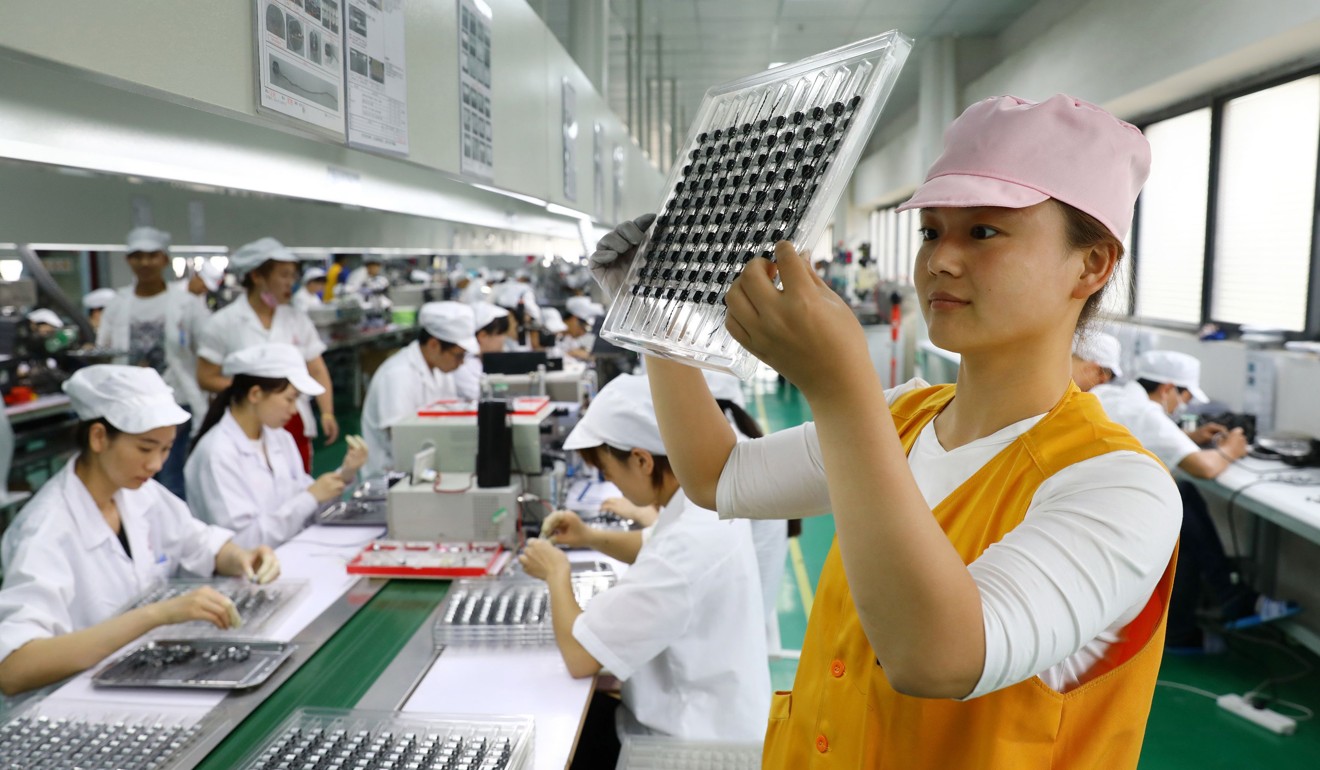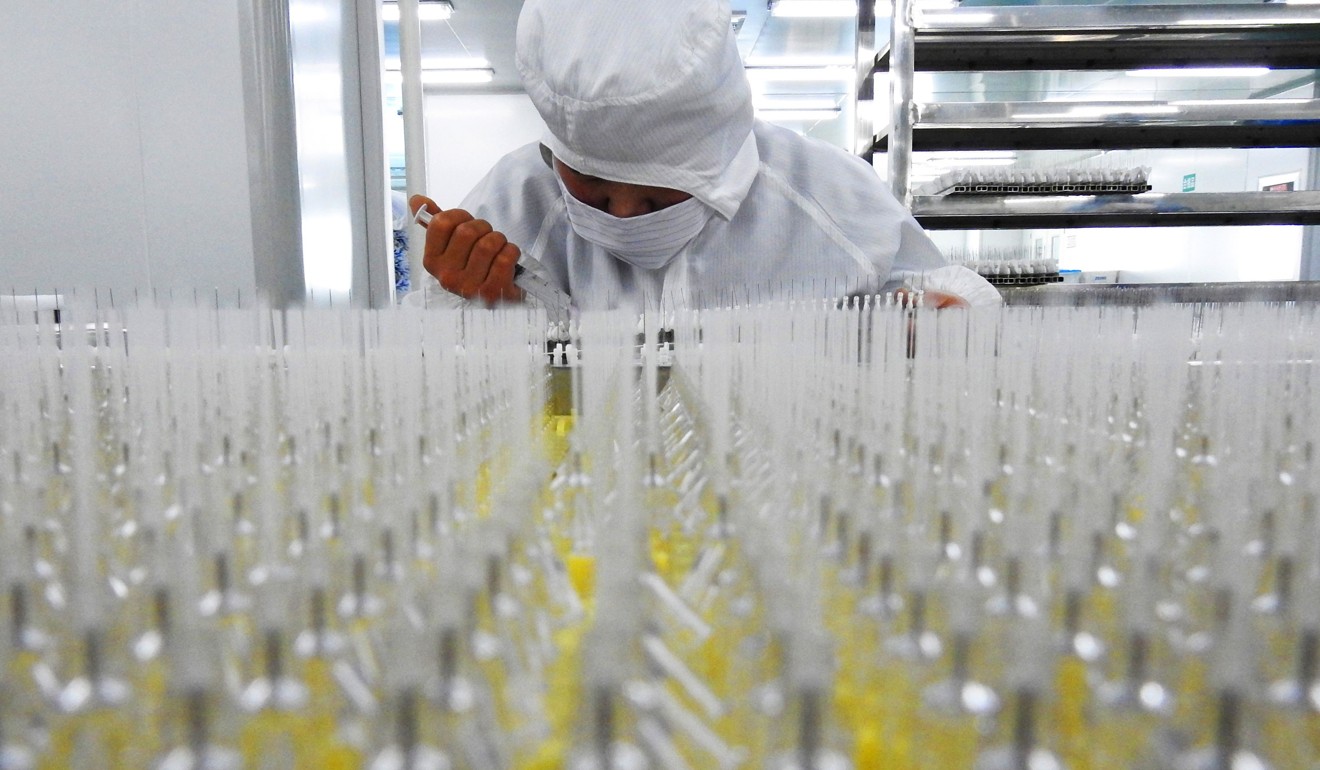
China still focused on reducing debt, creating jobs despite trade row with United States
Government will deepen ‘structural supply side reforms’ in second half of year, ‘firmly’ continue deleveraging
China will remain focused on reducing debt and creating jobs despite the “clear changes” in the external economic environment, the nation’s top decision making body said on Tuesday in what was most likely a reference to its ongoing trade dispute with the United States.
The statement, made on state television, came after a meeting of the Politburo, which also declared that growth was still on track.
China reported 6.8 per cent growth for the first half of 2018, but pressure on the world’s second-largest economy is growing due to its heavy debt burden and rising trade hostilities with the United States.
The government will also deepen its “structural supply side reforms” in the second half of the year and “firmly” continue deleveraging – two of the hallmarks of President Xi Jinping’s economic policy – the statement said.

Zhang Ming, a researcher with Chinese Academy of Social Sciences, said there “would not be any fundamental changes in China’s macroeconomic policy direction”.
Any “marginal adjustments” that were made would be intended to avoid a sharp growth deceleration, but Beijing’s strategic focus was still on cutting debt levels, he said in a note.
While the statement did not name the US or President Donald Trump, the statement showed that China remains intent on shoring up its defences against external shocks.
To deal with “new problems and new challenges”, China will try to “stabilise employment, stabilise finance, stabilise foreign trade, stabilise foreign direct investment, stabilise investment, and stabilise expectations”, the statement said.
It will also “protect the legitimate interests of foreign businesses in China”, it said, in a repeat of Beijing’s promise that it will not deliberately inflict pain on American firms operating within its territory.
The leaders also agreed to implement a “more proactive” fiscal policy and adopt a prudent monetary policy stance, suggesting some fine tuning of the government’s economic policies to help growth was on the cards.
“China’s fiscal policy must play a bigger role in expanding domestic demand and promoting structural adjustment,” the statement said. Spending on infrastructure projects, if vital for future development, will be speeded up, it said.

Ding Shuang, chief China economist with Standard Chartered, said policymakers were paying more attention to safeguarding growth and preventing social instability.
“The government might slow down certain reform measures to reduce turbulence,” he said. “The process of deleveraging will be slower and less intensive because of the trade war.”
The government’s references to employment stability, at a time when China’s official jobless rate in urban areas was just 3.8 per cent at the end of June, was indicative of its cautious approach, he said.
The Politburo said it was determined to resolve China’s housing problems and “firmly” curb rises in property prices, which are a cause of concern for millions of Chinese families.
The statement did not give any specifics as to how the problem might be resolved, but Hong Hao, chief strategist with Bocom International Holdings, said it showed the leadership was aware of people’s concerns.
The Politburo holds quarterly conferences – usually in April, July, October and December – to discuss economic activities and progress. The midyear meeting in July sets the tone for macroeconomic policies in the second half.
A look at regional performance data suggests China’s economy is in worse shape than its headline figures imply, even before the full impact of the trade war with the US has been felt.
A review of the data by the South China Morning Post found signs of a broad slowdown, with growth in some parts of the country stagnating or even contracting.
China’s official manufacturing purchasing managers’ index fell to a five-month low of 51.2 in July, the National Bureau of Statistics said on Tuesday.
There were no fundamental changes in Tuesday’s Politburo statement to the one announced a year ago when leaders agreed to deepen supply-side reforms, including getting rid of loss-making state-owned “zombie” companies, tackling local government debt, and improving the coordination of financial regulation to deal with systemic risk.
At a cabinet meeting on July 23, Premier Li Keqiang said the government would take a “more proactive fiscal policy” and push forward a 1.35 trillion yuan (US$198 billion) spending plan for local government infrastructure projects.
These efforts, along with a less aggressive monetary policy tightening, were intended to “handle uncertainties in the external environment” – a euphemistic reference to the trade war with the US – and keep economic growth within the preferred range.



